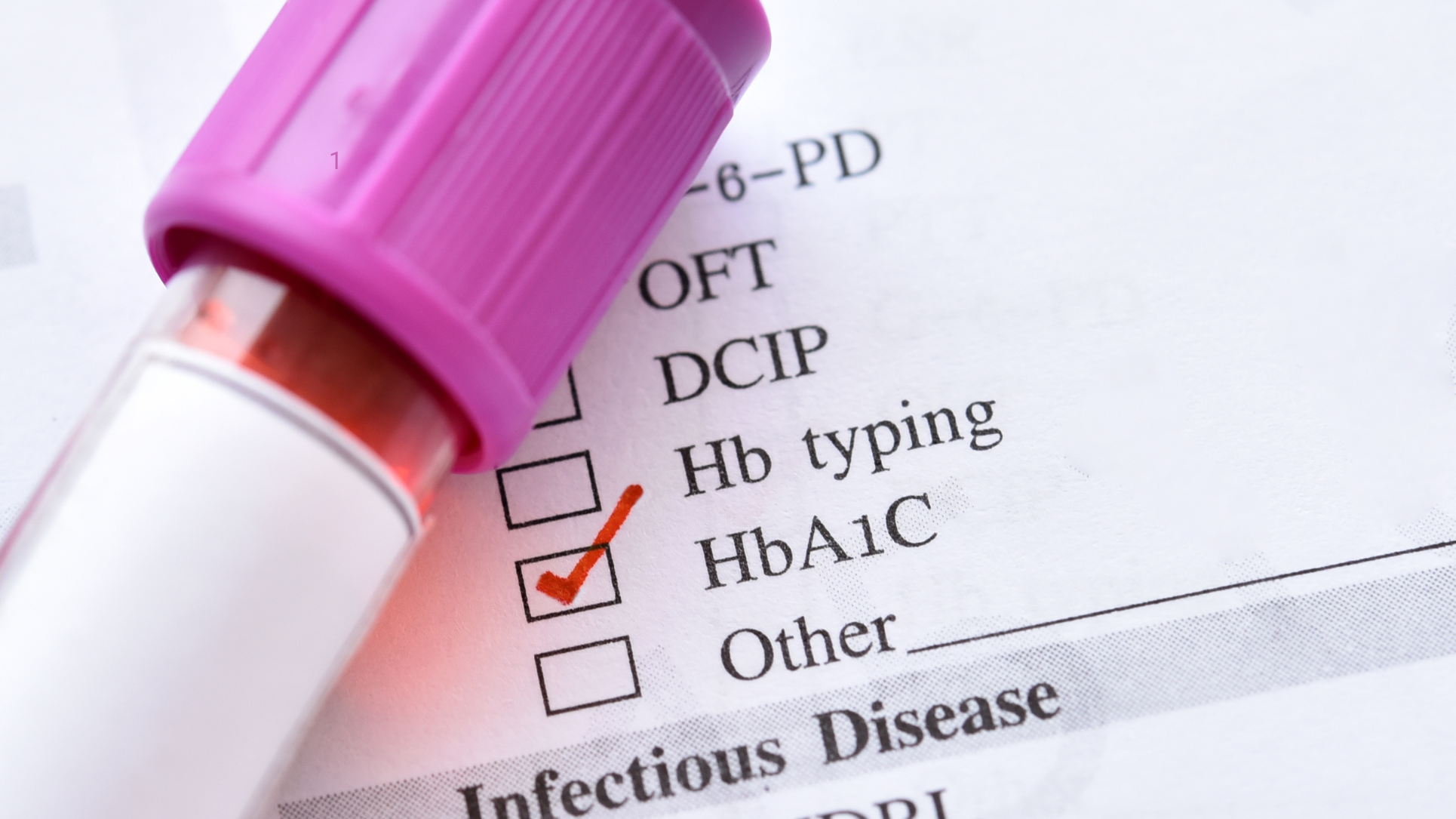Have you ever wondered if your diabetes test results are telling the whole story? If you have chronic kidney disease (CKD), there’s something important you should know about the A1C test that doctors use to monitor diabetes.
What is the A1C Test?
The A1C test (also called hemoglobin A1C or HbA1C) is like a report card for your blood sugar. While regular blood sugar checks show your levels at one moment, the A1C test reveals your average blood sugar levels over the past 2-3 months.
Here’s how it works: when sugar enters your bloodstream, it sticks to hemoglobin, a protein in your red blood cells. The more sugar in your blood, the more hemoglobin gets “sugar-coated.” The A1C test measures this percentage of sugar-coated hemoglobin. For most people without diabetes, A1C is below 5.7%. For those with diabetes, doctors usually recommend keeping it below 7%.
Why Kidney Disease Affects A1C Results
If you have chronic kidney disease, your A1C results might not be as reliable as they should be. Here’s why:
Red Blood Cell Lifespan Changes
In healthy people, red blood cells typically live for about 120 days (or 3-4 months). The A1C test works so well because it measures sugar build-up during this predictable lifespan.
But kidney disease changes things. When your kidneys aren’t working properly:
- Your red blood cells might not live as long as they should
- Your body might make new red blood cells more quickly
- You might have anemia (low red blood cell count), which is common in kidney disease
If your red blood cells live for a shorter time, they don’t collect as much sugar—even if your blood sugar is actually high. This can make your A1C result falsely low.
Other Factors That Can Throw Off Results
Kidney disease can affect your A1C results in other ways too:
- Some medications used for kidney disease might impact the test
- Dialysis treatments can affect red blood cell production
- Iron deficiency, which often happens with kidney disease, can make A1C results higher than they should be
- Certain kidney medications can interfere with how the test works

How Doctors Diagnose This Problem
Your doctor might suspect your A1C isn’t accurate if:
- Your A1C results don’t match what your regular blood sugar checks show
- Your diabetes symptoms get worse even when your A1C seems fine
- Your A1C changes dramatically between tests without clear reason
- You have moderate to severe kidney disease (especially if you’re on dialysis)
Sometimes the first clue is when you feel symptoms of high blood sugar (like being very thirsty or needing to urinate often) even though your A1C test suggests your diabetes is under control.
Alternative Tests That May Work Better
If your A1C isn’t reliable, don’t worry—other options exist:
Fructosamine Test: This measures the amount of sugar attached to proteins in your blood plasma. It shows your average blood sugar over the past 2-3 weeks rather than months.
Glycated Albumin Test: Similar to the fructosamine test, this measures sugar attached specifically to albumin, the most common protein in blood. It reflects your average blood sugar over about 2-3 weeks.
Continuous Glucose Monitoring (CGM): These devices check your blood sugar levels every few minutes throughout the day and night, giving a complete picture of how your levels change.
What This Means For You
If you have both diabetes and chronic kidney disease, you should:
- Talk to your healthcare team: Make sure all your doctors know about both your kidney disease and diabetes.
- Ask questions: Don’t be afraid to ask if your A1C results might be affected by your kidney disease.
- Consider a monitoring plan: Work with your doctor to create a personalized plan that might include:
- More frequent finger-stick checks
- One of the alternative tests mentioned above
- Possible adjustment of your target A1C level
- Watch for symptoms: Pay attention to how you feel. If you notice diabetes symptoms getting worse even with a “good” A1C, tell your doctor.
- Keep records: Track your blood sugar readings, symptoms, medication changes, and how you feel. These notes can help your doctor spot patterns that blood tests might miss.
The Bottom Line
Living with both diabetes and kidney disease can be challenging, but understanding how these conditions affect each other helps you take control of your health. With the right monitoring approach, you and your doctor can get an accurate picture of your blood sugar control and make the best treatment decisions for your unique situation.
Remember—your A1C is just one tool in your diabetes management toolbox. When kidney disease makes that tool less reliable, it’s time to reach for others that can help you stay healthy.
References
American Diabetes Association. (2022). Glycemic targets: Standards of medical care in diabetes. Diabetes Care, 45(Supplement 1), S83-S96.
National Kidney Foundation. (2023). Diabetes and chronic kidney disease. Retrieved from www.kidney.org/atoz/content/diabetes
Little, R. R., & Roberts, W. L. (2009). A review of variant hemoglobin’s interfering with hemoglobin A1c measurement. Journal of Diabetes Science and Technology, 3(3), 446-451.
Rhee, J. J., et al. (2019). Use and interpretation of hemoglobin A1C in patients with advanced kidney disease. Diabetes Care, 42(11), 2161-2167.
Kidney Disease: Improving Global Outcomes (KDIGO) Diabetes Work Group. (2020). KDIGO 2020 Clinical Practice Guideline for Diabetes Management in Chronic Kidney Disease. Kidney International, 98(4S), S1-S115.
